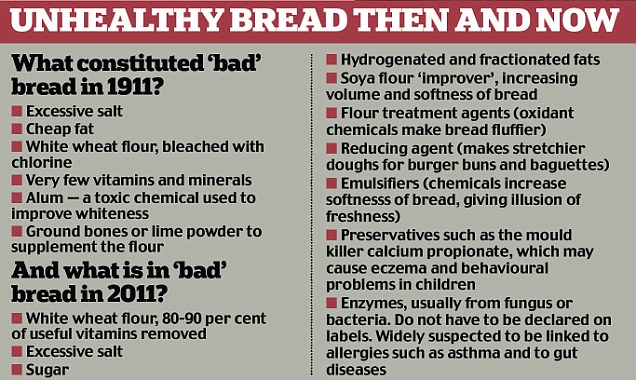I’m with you – we all love eating bread. I love to bake bread combining whole wheat, natural yeasts and water. It’s a tedious process of kneading the dough followed by a beautiful aroma of bread baking in the oven and the fun filled ritual of breaking bread with friends who want to learn bread baking. A beautiful, homemade, whole-grain loaf, eaten in moderation, is a perfect thing for a bread lover.
Bread whether in the form of loaves, tortillas, naan, pita or chapatti eventually came to play a central role in food cultures all over the world.
[cycloneslider id=”20140513-bread”]
So how did something so deep-rooted and loved in so many cultures for centuries suddenly get such a bad name?
The industrial refining process strips out most of the nutrition from the bread. More over refined flour reacts with yeast and other agents to be fluffy and soft. Pure wheat grain bread would be dense in texture and won’t be spongy as a cake.
The brown breads or whole wheat breads have brown color, wheat flavor, preservatives and low % of wheat in it. Yeast and improving agent reacts only with refined flour (Maida) to give that spongy texture. Wheat doesn’t react with yeast as much as Maida does that’s why home baked wheat bread has a dense texture compared to store bought brown bread.
Home cooked bread stays well only for 3 days after that if kept in fridge it will become rusk or kept outside in humid climate – it will catch fungus.
So how do breads available in the market stay well for 8 to 10 days? When home cooked bread lasts for maximum 3 days don’t you think there is something wrong?
Source: http://www.dailymail.co.uk/health/article-2003622/Is-bread-making-ill-How-2011s-loaves-bad-you.html
In earlier times, people used to do physically strenuous labor all day long. All that work required fuel, and Maida could be digested as their metabolic rate was high. These days, we’re just not that active. We can’t digest Maida that easily. Bread with Maida will stick in your teeth and throat.
Key points to keep in mind:
- Learn bread baking – If you have an oven, start baking. It’s going to strengthen your hands and it’s a really good exercise.
- The key to getting the best of bread is to make healthy choices, and to enjoy it in moderation.
- Read the ingredients label to make sure the presence of the word “Whole” – as in “whole-wheat” or “whole-grain” – is listed first, and that’s why you much read the entire ingredient list. If you can’t understand – Google and know the ingredients. Minimize breads made from refined grains – they’re the ones that usually have less than 2 grams of fiber per serving.
- Certain medical conditions can render the body intolerant to wheat and other grains. If you have Celiac disease or another form of Gluten intolerance, you must avoid wheat, rye, barley and certain other grains.
- Keep bread in a cool, dry place out of direct sunlight. Freeze what you won’t eat within 2 – 3 days. French or Italian breads made without any oils have a very short shelf life, so consider freezing them earlier.
As an avid baker, I encourage you to try baking your own bread. It’s a great way to make sure that your bread contains only high-quality, healthful ingredients.
Bottom Line: Whole grain breads are better for you than breads made with refined grains, but the best option is no bread at all. Breads made with soaked and sprouted grains may be less unhealthy. Anyone who needs to lose weight should eliminate bread and other sources of gluten grains from the diet.
Pictures of bread baked by us at home and store purchased bread. The difference between the two can be seen.







,